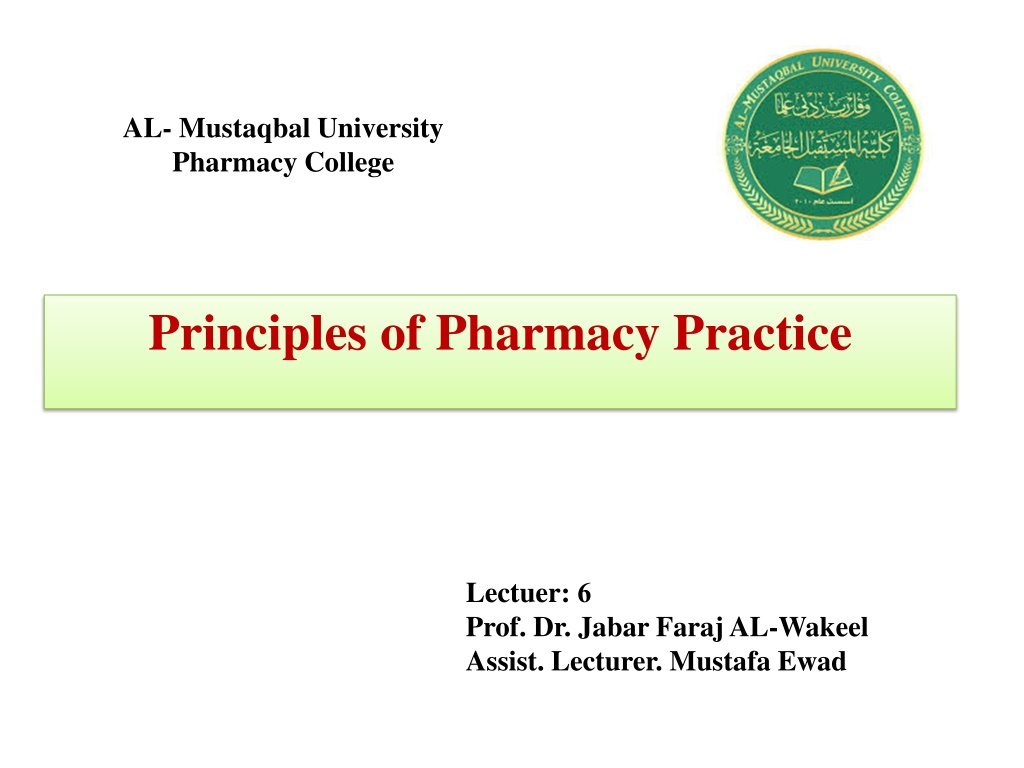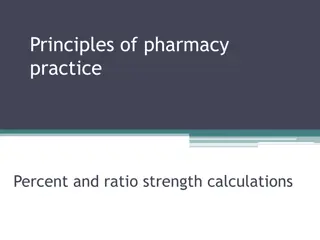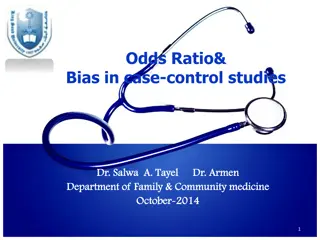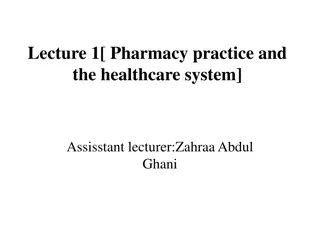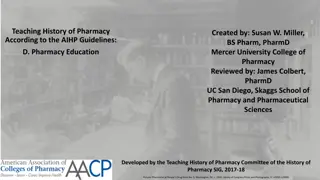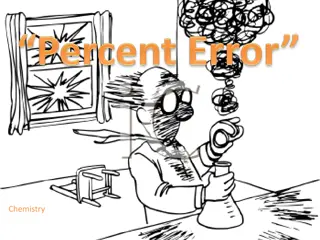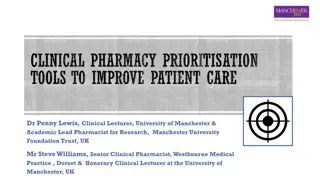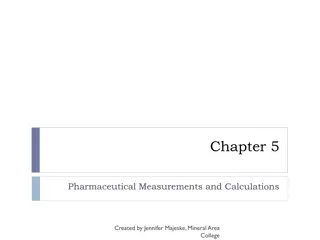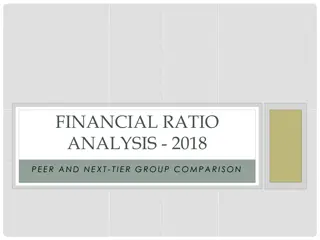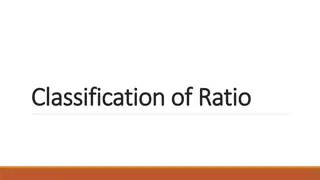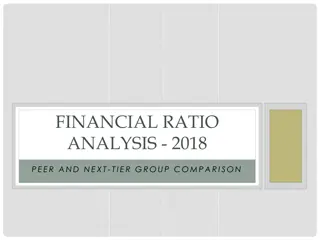Understanding Ratio Strength and Milligrams Percent in Pharmacy Practice
In the field of pharmacy practice, understanding ratio strength and milligrams percent is essential for preparing solutions accurately. Ratio strength involves expressing concentrations in parts per hundred, while milligrams percent denotes the amount of substance in 100 mL of liquid. This article explains the principles behind these concepts, provides example calculations, and explores conversion techniques for pharmacists. Enhance your knowledge of pharmacy practice with insights into calculating solutions and interpreting concentration measurements.
Download Presentation

Please find below an Image/Link to download the presentation.
The content on the website is provided AS IS for your information and personal use only. It may not be sold, licensed, or shared on other websites without obtaining consent from the author. Download presentation by click this link. If you encounter any issues during the download, it is possible that the publisher has removed the file from their server.
E N D
Presentation Transcript
AL- Mustaqbal University Pharmacy College Principles of Pharmacy Practice Lectuer: 6 Prof. Dr. Jabar Faraj AL-Wakeel Assist. Lecturer. Mustafa Ewad
Ratio Strength The concentrations of weak solutions are frequently expressed in terms of ratio strength. All percentages are a ratio of parts per hundred, For example, 5% means 5 parts per 100 or 5:100. When a ratio strength, for example, 1:1000, is used to designate a concentration, it is to be interpreted as follows: For solids in liquids1 g of solute or constituent in 1000 mL of solution or liquid preparation. For liquids in liquids 1 mL of constituent in 1000 mL of solution or liquid preparation. For solids in solids 1 g of constituent in 1000 g of mixture. The ratio and percentage strengths of any solution or mixture of solids are proportional, and either is easily converted to the other by the use of proportion.
Calculating the ratio strength of a solution or liquid preparation, given the weight of solute or constituent in a specified volume of solution or liquid preparation involves the following.
Example-1: How many grams of potassium permanganate should be used in preparing 500 mL of a 1:2500 solution? Example-2: How many milligrams of gentian violet should be used in preparing the following solution? Gentian Violet Solution 500 mL 1:10,000 Sig. Instill as directed.
Milligrams Percent The term milligrams percent (mg%) expresses the number of milligrams of substance in 100 Ml of liquid. It is used frequently to denote the concentration of a drug or natural substance in a biologic fluid, as in the blood. Thus, the statement that the concentration of nonprotein nitrogen in the blood is 30 mg% means that each 100 mL of blood contains 30 mg of nonprotein nitrogen. Quantities of substances present in biologic fluids also commonly are stated in terms of milligrams per deciliter (mg/dL) of fluid. Simple Conversions of Concentration to mg/mL Occasionally, pharmacists, particularly those practicing in patient care settings, need to convert rapidly product concentrations expressed as percentage strength, ratio strength, or as grams per liter (as in IV infusions) to milligrams per milliliter (mg/mL). These conversions may be made quickly by using simple techniques. Some suggestions follow.
Parts per Million (PPM) and Parts per Billion (PPB) The strengths of very dilute solutions are commonly expressed in terms of parts per million (ppm) or parts per billion (ppb), i.e., the number of parts of the agent per 1 million or 1 billion parts of the whole. For example, we are all familiar with fluoridated drinking water in which fluoride has been added at levels of between 1 to 4 parts per million (1:1,000,000 to 4:1,000,000) for the purpose of reducing dental caries. Example Calculations of Parts per Million and Parts per Billion Example-1: Express 5 ppm of iron in water in percentage strength and ratio strength Example-2:The concentration of a drug additive in an animal feed is 12.5 ppm. How many milligrams of the drug should be used in preparing 5.2 kg of feed?
